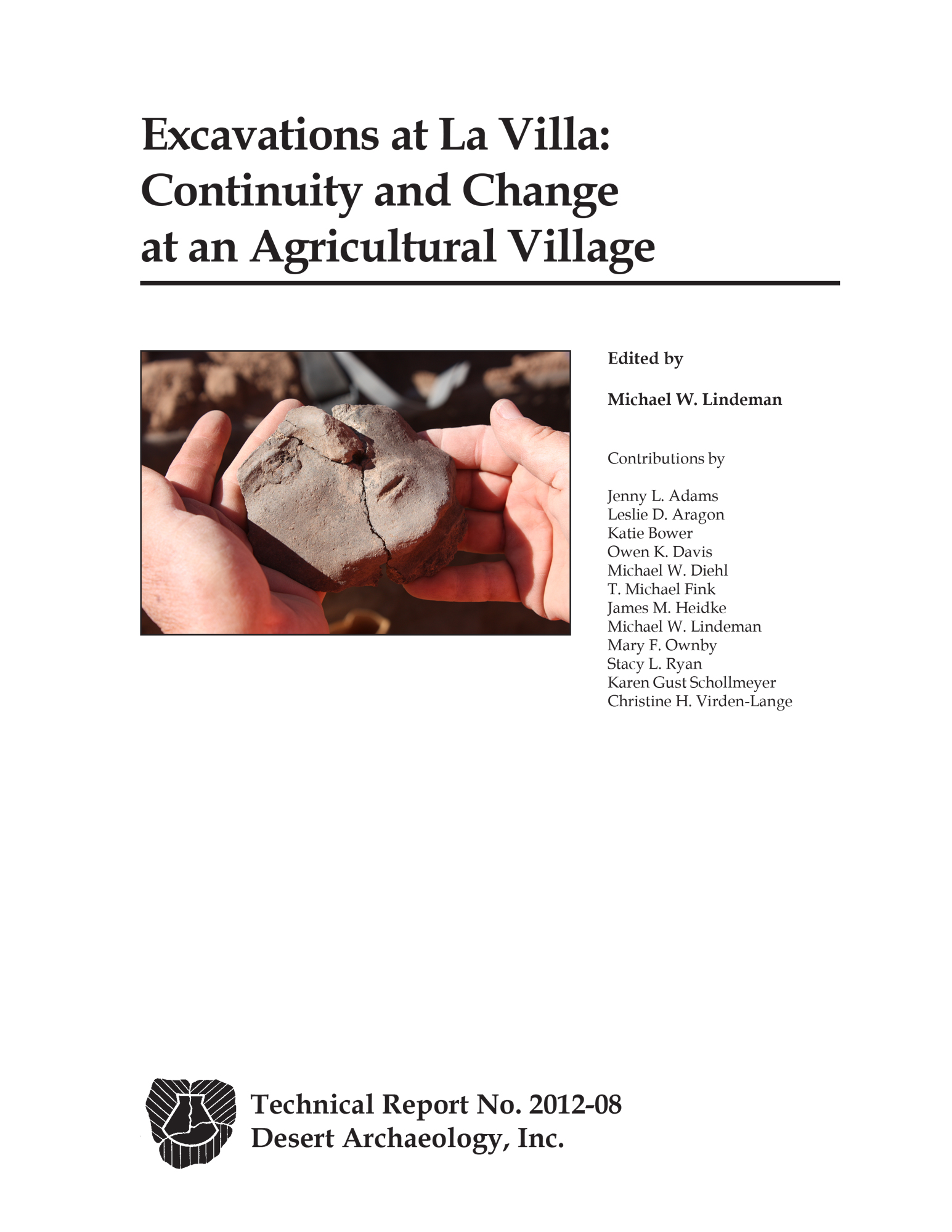Description
Excavations at La Villa: Continuity and Change at an Agricultural Village (TR2012-08) (PDF)
The archaeological excavations documented in this volume examine the Hohokam village of La Villa, AZ T:12:148 (ASM). From its founding in the sixth century A.D., until abandonment in the eleventh century, La Villa was one of the largest villages in the Phoenix Basin. Current excavations along Madison Street and 13th Avenue preceded the installation of a storm drain that was part of the larger Fillmore Street and 3rd Avenue Storm Drain project and provided a rare glimpse of a large pre-Classic period village.
From the founding of La Villa, its inhabitants were farmers. As productive specialization developed, particularly in ceramics but also in other goods, farming became increasingly important for the people of La Villa. Agricultural products became not only sources of sustenance, but also goods that could be exchanged for shell, ceramics, and other goods. Fieldwork along Madison Street and 13th Avenue revealed contexts spanning much of the Hohokam pre-Classic. Features were excavated dating from the Red Mountain phase through the Middle Sacaton, with the interval from Vahki through Early Sacaton being best represented. One of the strengths of the excavated data set is this incredible temporal sample, which revealed that change at La Villa came in fits and starts, interspersed by periods of remarkable continuity.
